QuestionQUESTION: Having been told by my father that there are no stupid questions...here it goes...
I have two snakes. A juvenile ball python and a hatchling baby corn snake. I was told not to be surprised if they did not eat right away due to stress, so I let each of them get used to their new habitats before their first feedings.
About 5 days later, I offered them their food. An F/T pinkie for the hatchling, and an F/T fuzzy for the ball python. Both went right for their food, no problems! I obviously did not have finicky eaters.
I went about 4 days before I offered the hatchling another pinkie, and he took to it right away. As for the ball, both the store and my friend told me not to feed it for at least another week.
The ball had other ideas. It started coming out of it's hide and tracking me when I was in the room. It roamed it's habitat and seemed to be hunting. So, I fed it another fuzzy and it gobbled it right up.
Soon, both snakes were virtually on a 3-4 day feeding schedule with their pinkies and fuzzies. After eating they would go to their hides and pretty much stay there. But, when they got hungry, let me know in their way. The hatchling would go out into the open and curl up in the same spot of it's cage to wait for it's pinkie. The ball python sticks his head out of his hide and seems to follow my every movement and sound with expectancy.
My friend said it was unusual behavior for both snakes. I wasn't so sure about that. Both continued to eat, even when they went into their shed cycles (the hatchling just had a full shed, and it came off in one perfect piece, eye covers and all). Even in shed mode, they didn't refuse to eat at all, or become cranky and reclusive.
I just changed the ball's meal up from fuzzies to a small adult mouse and that seems to have really made it happy. It seemed to be having a problem with the fuzzies, and that might have been because they were too small to satisfy it...?
Here is their current feeding schedule:
juvenile ball python - a small adult mouse every 5-7 days.
hatchling corn snake - a pinkie every 3-4 days.
So, my question is, am I overfeeding them? They appear to be thriving and content. the ball can hardly see as he's about to shed, but it can sense the food and goes right for it without hesitation. I have checked and it is not showing white skin between it's scales, so I don't think it's overweight. He curls up in a tight ball when he wants to as well.
Both snakes are friendly to handling (when done at the proper times) and I keep their separate habits well maintained, clean and dry but with fresh water for drinking and soaking every day. I regulate the temps and humidity accord to each snakes individual requirements.
My friend has never had snakes as young as mine are, and I think their metabolisms vary at different stages of their lives? Everyone just seems to think it strange that mine love to eat so much, so often.
I don't want to starve them, but I don't want to overfeed them either.
I'd appreciate your advice on the matter.
ANSWER: >
> Question:
> Having been told by my father that there are no stupid questions...here it goes...
>
> I have two snakes. A juvenile ball python and a hatchling baby corn snake. I was told not to be surprised if they did not eat right away due to stress, so I let each of them get used to their new habitats before their first feedings.
>
> About 5 days later, I offered them their food. An F/T pinkie for the hatchling, and an F/T fuzzy for the ball python. Both went right for their food, no problems! I obviously did not have finicky eaters.
>
> I went about 4 days before I offered the hatchling another pinkie, and he took to it right away. As for the ball, both the store and my friend told me not to feed it for at least another week.
>
> The ball had other ideas. It started coming out of it's hide and tracking me when I was in the room. It roamed it's habitat and seemed to be hunting. So, I fed it another fuzzy and it gobbled it right up.
>
> Soon, both snakes were virtually on a 3-4 day feeding schedule with their pinkies and fuzzies. After eating they would go to their hides and pretty much stay there. But, when they got hungry, let me know in their way. The hatchling would go out into the open and curl up in the same spot of it's cage to wait for it's pinkie. The ball python sticks his head out of his hide and seems to follow my every movement and sound with expectancy.
>
> My friend said it was unusual behavior for both snakes. I wasn't so sure about that. Both continued to eat, even when they went into their shed cycles (the hatchling just had a full shed, and it came off in one perfect piece, eye covers and all). Even in shed mode, they didn't refuse to eat at all, or become cranky and reclusive.
>
> I just changed the ball's meal up from fuzzies to a small adult mouse and that seems to have really made it happy. It seemed to be having a problem with the fuzzies, and that might have been because they were too small to satisfy it...?
>
> Here is their current feeding schedule:
>
> juvenile ball python - a small adult mouse every 5-7 days.
>
> hatchling corn snake - a pinkie every 3-4 days.
>
> So, my question is, am I overfeeding them?
No, the corn snake's feeding schedule is fine, but you are underfeeding the ball python. My yearling ball pythons are eating hopper to small sized rats. (A couple can even take mediums now). Normal weight for a juvenile ball python (as opposed to a hatchling) is between 400 and 1000 grams, depending on individual growth rate. By age 2, they're generally 800 to 1500 grams. By age 3, 1200 to 2500 grams.
A 400 gram ball python should be eating at least a 40 gram rat, which is a hopper sized rat--eyes open, eating on its own, and weaned. In general, you want to feed a prey item that is 10% of the animal's body weight (if the weight is normal), or (and this is an easy way to do it), is as big around as the widest part of the snake. Be sure the snake is as wide as it SHOULD be, using that as your criteria--a thin ball python might be underfed, otherwise. Ball pythons should be nice and fat, that's their normal body type. Juvenile ball pythons can be fed every 7 days, but they will often be quite happy if you feed them every 5 days. (Adults should be fed only every 7 days, and depending on their growth rate and weight, and what they do over the winter, you may need to downgrade their prey size to prevent obesity, eventually--many keepers feed only small rats to adult ball pythons, and this would be appropriate for a pet male that has reached its full adult size, probably around age 4 or so).
Get a digital kitchen scale that weighs in 1 gram increments to track the weight of both snakes. (Sometimes weight loss is the first sign of a health issue, and you'll be able to determine if your feeders are the correct size, and if the snakes are growing as they should, this way). Many new snake owners underestimate the size of the prey their snake should be eating.
> My friend has never had snakes as young as mine are, and I think their metabolisms vary at different stages of their lives? Everyone just seems to think it strange that mine >love to eat so much, so often.
>
For both corn snakes and ball pythons, it's pretty difficult (perhaps impossible) to overfeed hatchlings or juveniles--if they will eat it, it's not too much (don't offer oversized prey, or too many prey items at once, however, as that can cause regurgitation). The food you offer will be put into growth. Hatchling corn snakes very quickly grow in size, and you will need to upgrade the prey you offer as the snake grows. If one pinky isn't a satisfying meal, but a fuzzy is too large, then offer two pinkies at a time until the snake puts on that extra bit of size and can take the fuzzy. If your corn snake is still looking for food--give it more food. Give it up to 3 at a time, and then wait 5 days before offering again.
A 5 to 7 day feeding schedule is typical for hatchlings and juveniles. I've certainly fed hatchling ball pythons every 4 days--with full-sized prey--and they've done very well. (Juveniles usually prefer at least 5 days between meals).
Some species, such as boa constrictors, can develop serious health issues if overfed when young, but ball pythons aren't like that. They don't get fat, they just grow bigger.
It's definitely time to upgrade your ball python's feeders, though. I offer fuzzy rats to my hatchlings, fresh out of the egg. By the time they're 6 months old, they are eating crawler rats, which are bigger than large mice.
Evaluate your corn snake's size, as well. It's a bit early in the season for corn snake hatchlings--are you sure it's a hatchling, and not a 2011 juvenile? Do you know the hatch date? Be sure prey items are not smaller than the width of the snake. For corns, they can actually be just a bit wider than the snake, too.
---------- FOLLOW-UP ----------
QUESTION: Thank you for the prompt answer!
I am actually glad to know that I followed my instincts and did NOT listen to the advice of my friend or the pet shop people, all of whom would have had me starving the poor snakes by cutting back on their food, not increasing it.
These are my first snakes, and I want to take care of them properly, just as I do for all the other animals under my care.
I will definitely increase the size of the prey items and get that kitchen scale to weigh them.
I see that the ball is sleeping quite peacefully in his hide at the moment, after having spent an hour working a larger mouse (it was larger than the ones I had been feeding it, but smaller than a rat) down it's throat. I didn't have much to choose from at the pet store, as their stock is rather depleted. I'll go to the next town where there is a smaller store that carries lots of reptiles and feeders. The staff is not terribly knowledgeable about the snakes, but they are better than the chain stores. I'll get it some appropriately sized feeders.
As to the hatchling corn snake, I got it at about 6 inches and the width smaller than a pencil. I have had it a month, and it has at least doubled in size, if not more. I don't know when it was born exactly, but it came from a chain pet store that starts with a "P", and they were feeding it crickets. I didn't ever give it a cricket, I went straight into the pinkies with its feedings. And since he (or she) is eating 2 a meal, I will offer it a fuzzie next feeding.
I don't see a food bump after it eats a pinkie now. In fact, for both snakes, after they ate their prey, you would never have known they had eaten at all by just looking at them.
Finally, I do see a small sized food bump on the python after he gets it down. And for the first time it's not looking at me like it's still hungry. I will see if he's hunting for another meal in a few days or not.
Thank you for the advice, and I'll continue to monitor their feeding habits closely, as well as their weight and sizes.
AnswerYou did the right thing, as corn snakes do not eat insects--not at any stage. So, they were not feeding it at all--they were just harassing it with crickets. In fact, the only insectivorous snake that commonly appears in pet stores is the rough green snake...and it's only recommended for experts, as it does not do well in captivity.
If the "P" pet store was a Petco or a Petsmart, you should call the Corporate office and report them. They are given strict guidelines on how to care for their livestock, and those guidelines include feeding frozen/thawed pinky mice to baby corn snakes--not crickets. Reporting them is best, as they will be corrected, and will stop torturing the snakes.
It sounds like you have everything else in order. :)
Here are some articles on ball python care from my site:
http://www.eclipseexotics.com/index.php?main_page=page&id=29

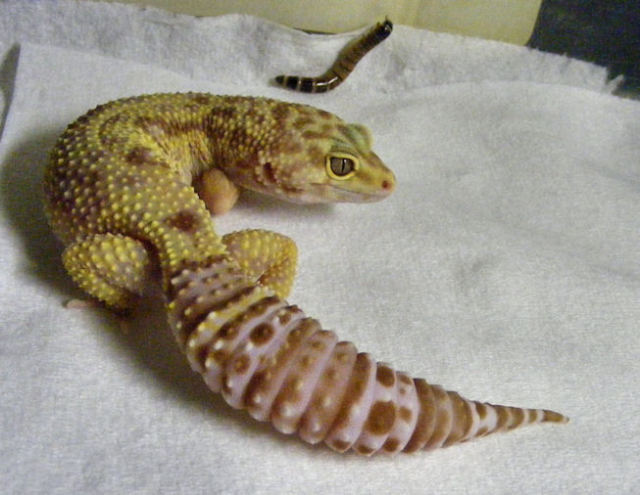 My Leopard Geckos Strange Dietary Habits
QuestionQUESTION: This is my first reptile pet, and I h
My Leopard Geckos Strange Dietary Habits
QuestionQUESTION: This is my first reptile pet, and I h
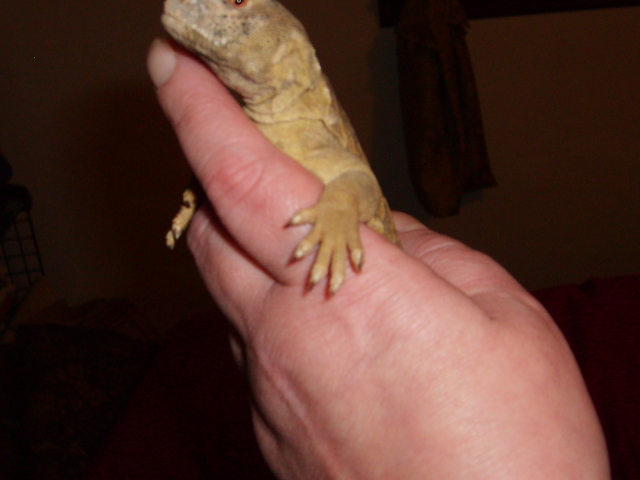 Sue Sue the juvenile female uromastyx
QuestionQUESTION: About 1 year ago I rescued 3 Uromasty
Sue Sue the juvenile female uromastyx
QuestionQUESTION: About 1 year ago I rescued 3 Uromasty
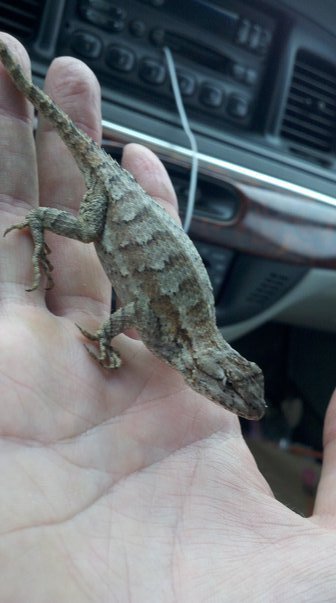 Texas Spiny lizard?
QuestionTexas Spiny Lizard?
QUESTION: My son fou
Texas Spiny lizard?
QuestionTexas Spiny Lizard?
QUESTION: My son fou
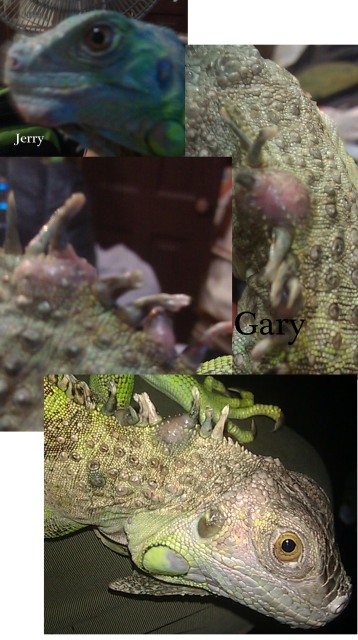 Iguanas abscess
Questionabscess
QUESTION: I have two 4 year old
Iguanas abscess
Questionabscess
QUESTION: I have two 4 year old
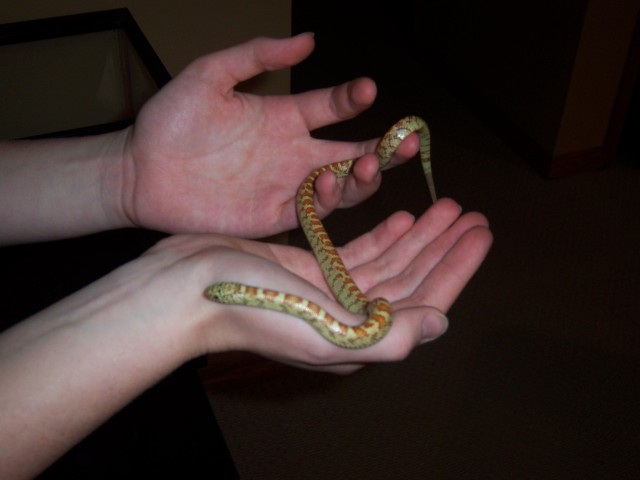 Baby hypo Kingsnake wont eat
QuestionThis is my snake when
QUESTION: I under
Baby hypo Kingsnake wont eat
QuestionThis is my snake when
QUESTION: I under